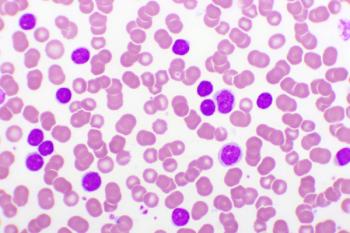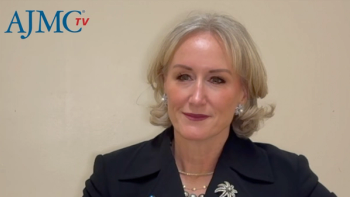
Merkel Cell Carcinoma in the United States: Prognostics and Treatment Options
Narrowing in on neuroendocrine skin cancer, a session at the North American Neuroendocrine Tumor Society annual meeting October 4-6 in Seattle, Washington, took an in-depth look at prognostics and treatment options for Merkel cell carcinoma in the United States.
Narrowing in on neuroendocrine skin cancer, a session at the North American Neuroendocrine Tumor Society annual meeting October 4-6 in Seattle, Washington, took an in-depth look at prognostics and treatment options for Merkel cell carcinoma (MCC).
MCC is most common in people over age 50, on UV-exposed skin, and in those with systematic immunosuppression. It typically arises as a nondescript, painless red or purple bump, is usually misdiagnosed as a cyst, grows rapidly, and has a high propensity for metastasis.
Like other neuroendocrine cancers,
Immunosuppression increases the risk of MCC and those with multiple forms of systemic immunosuppression have markedly increased risk of MCC from 5- to 50-fold. This includes solid organ transplant recipients and immunosuppressive, T-cell toxic medications associated with these transplants; medications for autoimmune disease; untreated HIV or AIDS; and CLL/lymphoid malignancies.
Once diagnosed with MCC, 10% of patients that are immunosuppressed have markedly worse treatment efficacy and overall survival, according to Paulson.
She explained that there are 2 ways to develop MCC, and while the 2 start differently, they share the same biology. Accounting for 80% of MCC cases is the Merkel cell polyomavirus, a common virus that lives on the skin and often presents no symptoms. The virus breaks in a way that integrates to cause cancer that’s addicted to the expression of viral T antigens.
The other 20% of MCC cases are the result of extensive sun damage.
For locoregional, clinically node-negative MCCs, wide local excision is typically recommended, and under most circumstances, providers should consider sentinel lymph node biopsy to determine if the cancer has spread. Adjuvant radiation is also indicated in many circumstances. Paulson also highlighted the importance of cross-sectional imaging.
“One of the unique features of MCC is, because of its biology, where 80% is caused by the virus, we can use the immune response to the virus to track tumor burden,” explained Paulson.
For adjuvant therapy in patients with node-positive MCC, Paulson explained that radiation is usually indicated. She also warned that chemotherapy in adjuvant setting should not be used and is associated with markedly worse outcomes. Teasing a future with immunotherapy, Paulson said the method of treatment is being tested in randomized controlled trials as adjuvant treatment for stage 3 MCC.
In the metastatic setting, MCC has historically been treated like small-cell lung cancer, with platinum-based doublet chemotherapy being standard of care. “Unfortunately, outcomes for this were dismal, and less than 10% of patients were alive in 3 years and the likelihood of developing resistance was high,” explained Paulson.
Because of the viral driver in 80% of MCC cases, and because of the associations between MCC and the immune system, immune checkpoint inhibitors have significantly improved survival for metastatic disease and are now standard of care/first-line therapy for metastatic MCC. Treatment with these inhibitors have cause 3-year overall survival to jump from 10% to 64%.
Currently,
For patients who do not respond to immunotherapy, other treatment options include: platinum doublet chemotherapy, ipilimumab plus nivolumab, and single-fraction radiotherapy in combination with immunotherapy.
Newsletter
Stay ahead of policy, cost, and value—subscribe to AJMC for expert insights at the intersection of clinical care and health economics.









































